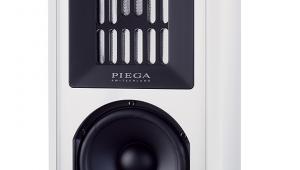ELAC Navis ARF-51 Active Loudspeaker Page 2
Switching the speaker to wireless input mode allows it to be linked with one of ELAC's transmitters, by pressing the 'pair' button on the speaker, then the transmitter. A light flashes, and then extinguishes when pairing is achieved, while a switch on the rear of each speaker allows it to be designated as left or right channel before pairing. It's also possible to connect an Air X2-compatible subwoofer to the transmitter in parallel with the speakers, though with the powerful bass available from the ARF-51, it's hard to imagine when that would be needed.
![]() Thumping Bass
Thumping Bass
The speakers are designed to be used within 30-60cm of rear and side walls, and I used them at the further distance, toed in as suggested to the listening position. If you need to have them closer, that –4dB setting on the bass may well come in handy, while the treble adjustment can help compensate for heavily furnished rooms or, alternatively, emptier spaces having too bright a sound.
Signal was supplied via a selection of preamps and 'variable output' sources, including a Novafidelity X45Pro [HFN May '19] in 'digital preamp' mode and the preout of my Naim preamp, with brief excursions into wireless operation using the Discovery Connect DSC-101W-G 'hub'.
As a result, the listening fell into two rather distinct sections: an assessment of how well the Navis ARF-51 fared as an alternative to a conventional power amp/passive speakers combination, and as a complete wireless solution. And if you're hankering for an executive summary, the upshot is that the speakers are rather good in the latter role, and nothing short of exceptional when used 'all analogue'.
Indeed, having tried a variety of similar designs in the past, I have to say I was more than pleasantly surprised with these ELAC Navis speakers within the first minute or so of Madonna's Madame X album [Maverick/Live Nation/Interscope 00602577620416], where the combination of high levels of intricate detail and thumping bass sees all their qualities much in evidence.

The whispered intro to the album is remarkably intimate, and by the time we get to the tripping rhythms of 'Future' or the heavier disco beats of 'I Don't Search I Find' there's no doubt about the resolution or speed of these speakers. Admittedly I did use the +1dB setting on the midrange to add a shade of bite to the vocal, but that's a matter of personal taste.
These are exceptionally well-integrated speakers across a wide range of musical styles – perhaps they are a little on the smooth and generous side, which is no bad thing for day-to-day listening, but this is achieved without any expense to clarity or intelligibility. The bravura performances on Rachel Podger's stripped-back reading of Vivaldi's 'Four Seasons' [Channel Classics CCS SA 40318] sing out with an admirable combination of bite and weight. What's more, the sense of focus in the soundstage picture is extremely toothsome, while at the same time the fluidity of the playing is all too obvious.
And wirelessly? Well, the sound becomes a little less open, a bit softer at the frequency extremes and loses some of its excellent focus, thus proving there's no such thing as a free lunch. Yet it still retains the dynamic ability, weight and sheer listenability of what are very fine 'powered' speakers.
Ready To Rumble
Back to a cabled connection and the straight-down-the-line blues rock of Keb' Mo's latest album, Oklahoma [Concord Records 888072101913]. Here the weight, speed and sheer resolution of the Navis ARF-51 came together to project a sound into the room that more or less defied this listener not to smile. The music charged along, every instrument easy to hear in the mix – above all, it was a blast. The album sounds gorgeous, from the rootsy feel of 'This Is My Home' to the exuberant 'Put A Woman In Charge', where the ARF-51 more than does justice to that production job.
The weight and power here ensures these speakers can pound out big rock and orchestral music with real solidity as well as they can reveal all the intimacy of a solo instrument lovingly recorded. And when you get both aspects at once, as on Olivier Latry's Bach To The Future, the last recording made on the organ at Notre Dame de Paris before the fire, the ARF-51's ability to rumble out the pedals of the instrument, have power in reserve for the crescendos and still create that sense of the great church space is rather wonderful.
Hi-Fi News Verdict
If you're going to use the ARF-51 speakers wirelessly, be prepared for some trade-off between cable-free convenience and ultimate sound quality. Fortunately, the speakers themselves set the bar high, so what is an exceptional range of abilities, creating a really rather magical experience in wired, all-analogue mode, simply becomes very acceptable, if not exceptional, when the wireless system is in place.
























































